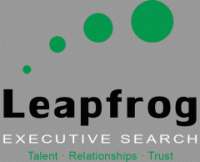Leading from Both Ends of the Pyramid
Category : 2020
 Do you remember early in 2020 when strategic discussions about your workforce focused on providing development opportunities for Millennials, creating meaningful recognition programs, and designing career paths that would retain top performers?
Do you remember early in 2020 when strategic discussions about your workforce focused on providing development opportunities for Millennials, creating meaningful recognition programs, and designing career paths that would retain top performers?
As Spring Break extended into a second and third week, conversations shifted to helping people feel connected and included in a virtual workplace that solidified into more than a temporary solution. As we moved into June and July, the bottom levels of Maslow’s hierarchy became an unavoidable priority as the loss of shelter, stability, health, end even food became very real possibilities for many workers.
French philosopher Michel de Montaigne observed “My life has been full of terrible misfortunes, most of which never happened.” Many in 2020 wish they could say their lives were that simple. Corporate leaders will soon reach a six-month milestone of trying to ring a bell of certainty that can be heard above the COVID-19 cacophony. Executives now face the very real demand of continuing to allocate energy and resources toward resolving very real physical, security, and social needs for employees without losing sight of the longer-term expectations people still hold for their ego and self-actualization goals.
Complex problems don’t require complicated solutions. Order can be created in the mayhem. It is possible to find a place of equilibrium in the chaos.
Avoid pandemic panic. Build the necessary models and create the needed disaster plans without assuming the worst and feeding the already robust level of fear that pervades every industry. During a season of uncertainty (however long it may continue) people want their leaders to mirror confidence, without bravado. Blind optimism is little more than Pollyanna blather without a difficulty to give it meaning. Get agreement on the problems to solve while refusing to create complexity by swimming in the quicksand of speculation and conjecture.
Direct the disruption. Use uninvited forces of change to create fresh momentum. A disruption in a business, market, or industry implies there is energy to disturb. Companies that will emerge on the other side of the pandemic healthier than before are those that use market dynamics to generate ideas that will birth the disruptive innovations that will define their businesses in the future.
Communicate to inform. There is a difference between having information and being informed. In a time of uncertainty, it is difficult to over-communicate. Leaders multiply their credibility when they increase transparency when talking with employees during a crisis. Gary Kelly and the leadership at Southwest Airlines have used All-hands meetings, videos, and team meetings across the enterprise to provide employees with the information they need to make informed decisions about the future. While their 47 year run of continuous profitability has likely reached its end, executives at Southwest remain confident that their innovative approach to business and workforce management will get them through this storm. Four decades of balancing people with profits have paid off with hundreds of Southwest employees volunteering to take weeks off work with reduced or no pay to help ensure the future of the company.
Invest in the future. Companies that ignore the reality they can no longer be who they were and refuse to invest in whatever type of organization they are becoming, will be one of the dozens of case studies explored in B-schools in years to come. While facing dramatic changes in how they serve customers, secure business, and manage a diverse workforce, one Texas professional services firm is launching a comprehensive, company-wide talent development initiative to build their brand and create greater differentiation in the market. This progressive CEO recognizes that while physical, security, and social needs demand attention, future growth hinges on providing employees with resources to achieve their ego and self-actualization goals. This company believes it is better to invest in people during a crisis than invest in replacing people when they leave after the crisis is over.
Leaders do not have the luxury of maintaining an either/or approach to managing through a pandemic. Geodesic solutions must integrate demands of the present with needs of the future if leaders want to chart a path through the continued uncertainty they cannot avoid. For additional insights into Maslow’s hierarchy in a COVID-19 world, check out the insightful model created by Randstad at https://rlc.randstadusa.com/for-business/learning-center/future-workplace-trends/maslows-theory-at-work-employee-needs-in-the-covid-19-workplace
